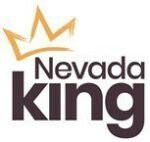Uncategorized
Nevada King drills 2.31 g/t gold over 71.7 metres at Atlanta, Nevada
Nevada King Gold Corp. [NKG-TSXV; NKGFF-OTCQX] reported assay results from four reverse circulation holes and…

Nevada King Gold Corp. [NKG-TSXV; NKGFF-OTCQX] reported assay results from four reverse circulation holes and one core hole recently completed at its 100%-owned Atlanta gold mine project, located 264 km northeast of Las Vegas, Nevada, in the prolific Battle Mountain trend. These holes were drilled 200 metres north of the Atlanta pit on Section 22-16N and cut across the high-grade feeder zone that includes a network of structures comprising the Atlanta Mine Fault Zone (AMFZ). The Company has incorporated these new results to produce an updated interpretation on cross section of this part of the AMFZ.
Highlights included Hole AT22WS-2 (2.31 g/t Au over 71.7m) that was drilled in the Northwest Target Zone, 32 metres eastward from historical hole DHRI-11-NRC3 (3.90 g/t Au over 56.4m). The Northwest Target Zone was initially identified by Meadow Bay in 2011 with hole DHRI-11-NRC3, but most of their subsequent holes stepped out westward and southward from this initial discovery hole and failed to go deep enough to fully penetrate mineralization.
Nevada King started its drilling in the Northwest Target Zone in late 2022 with the objective of defining mineralization eastward from DHRI-11-NR3 moving toward the AMFZ and eventually southeastward into the main Gustavson 2020 resource envelope. Today’s holes released along Section 22-16 do indeed confirm that gold mineralization connects eastward into the AMFZ and presents an impressive 215m wide and 55-80m thick mineralized zone that remains wide open to the west and at depth, with averaged intercept gold grades ranging from 0.21 g/t to 3.9 g/t gold.
Several of the holes released today and nearby historic holes bottomed in mineralization. Step-out drilling is currently underway along this section line and on parallel fences aligned along a north-south axis aimed at expanding the drill defined mineralized envelope laterally and to depth.
Drill hole AT822WS-2 returned 71.7 metres of 2.31 g/t gold and 5.8 g/t silver, including 33.6 metres of 4.10 g/t gold and 10.2 g/t silver that bottomed in mineralization. AT22NS-28T returned 64.8 metres of 0.50 g/t gold and 9.2 g/t silver.
Cal Herron, exploration manager of Nevada King, stated: “Meadow Bay made a significant high-grade discovery with its 2011 and 2012 drilling of the Northwest Target Zone. Advancing where they left off, Section 22-16N confirms connection of gold mineralization from the Meadow Bay intervals eastward to the AMFZ. Nevada King’s fence drilling across the southern end of the Atlanta Mine Fault Zone along sections 22-5N and 22-8N demonstrate the importance of the AMFZ with respect to controlling thick zones of mineralization within the volcanic section west of the fault, as well as higher-grade mineralization on both sides of the fault. Follow-up drilling will allow for a better understanding of both the structural geometry and distribution of higher-grade mineralization, as well as defining the bottom to the mineralization. Drilling has been active on adjacent parallel sections and new results are anticipated shortly, which will allow us to further refine our modeling of grade distribution in the Northwest Target Zone.
“Looking back at the drilling done from our start in May 2021 to today, the one characteristic that remains constant from hole to hole throughout the entire system is the consistent and contiguous nature of the gold mineralization seen in drill intervals. Grade distribution is generally even and does not fluctuate greatly from sample to sample in the drill intervals. Even with the high-grade intervals, gold values increase and decrease in a steady and even manner. In my experience, this type of grade consistency is generally the hallmark of a strong and well-developed gold system. As it stands right now, we do not know how deep the gold mineralization extends at Atlanta nor do we know what the lateral boundaries of gold mineralization are. Knowing we are drilling into a strong gold system without knowing what the lateral and vertical limits on the system are, we can only imagine what is possible at Atlanta as we move into this 2023 exploration season.”
Nevada King is the third largest mineral claim holder in Nevada, behind Nevada Gold Mines (Barrick/Newmont) and Kinross Gold. Starting in 2016 the company has staked large project areas hosting significant historical exploration work along the Battle Mountain trend located close to current or former producing gold mines. These project areas were initially targeted based on their potential for hosting multi-million-ounce gold deposits and were subsequently staked following a detailed geological evaluation.
District-scale projects in Nevada King’s portfolio include the 100%-owned Atlanta Mine, located 100km southeast of Ely, the Lewis and Horse Mountain-Mill Creek projects, both located between Nevada Gold Mines’ large Phoenix and Pipeline mines, and the Iron Point project, located 35km east of Winnemucca, Nevada.










